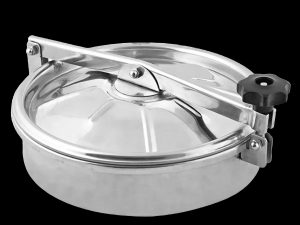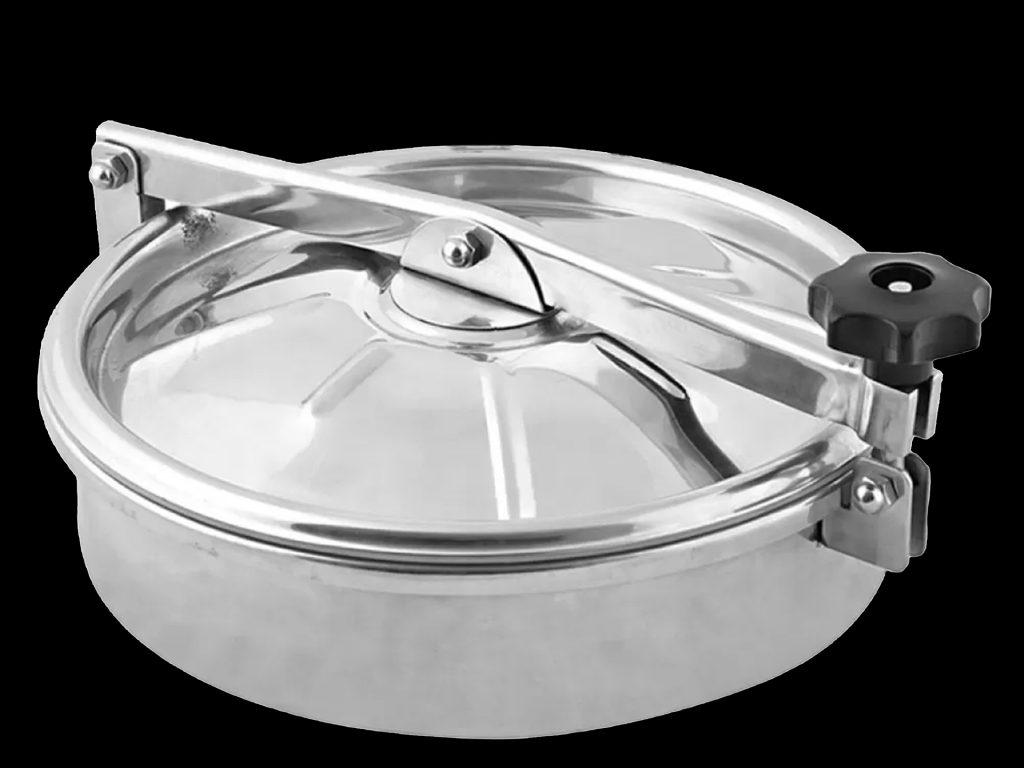
Paslanmaz Menhol Kapak
Paslanmaz Menhol Kapak Nedir?
PaslanmazMenhol kapakları, tank, kazan, reaktör ve benzeri kapalı sistemlerin içine erişimi sağlayan, genellikle yuvarlak ya da oval şekilde tasarlanmış kapaklardır. Hem insan erişimine olanak tanır hem de sistemin güvenliğini sağlar.
Neden Paslanmaz Tercih Edilir?
Paslanmaz çelik, dayanıklılığı, hijyenik yapısı ve uzun ömürlü kullanım imkânı sunması sebebiyle menhol kapaklarında en çok tercih edilen malzemedir. Özellikle gıda, kimya ve ilaç gibi hassas sektörlerde paslanmaz çelik vazgeçilmezdir.
Paslanmaz Menhol Kapağının Yapısı
Kullanılan Malzemeler
Paslanmaz menhol kapaklarında genellikle AISI 304 veya AISI 316 kalite paslanmaz çelik kullanılır. 316 kalite, yüksek korozyon direnci gerektiren ortamlarda tercih edilirken, 304 kalite daha standart koşullar için uygundur.
Üretim Süreçleri
Lazer kesim, kaynak, polisaj ve sızdırmazlık testlerinden geçen her menhol kapak, yüksek hassasiyetle üretilir. Sızdırmazlık için genellikle silikon, EPDM ya da viton conta kullanılır.
Standart Ölçüler ve Özel Üretim Seçenekleri
Menhol kapakları, 200 mm’den 600 mm’ye kadar çaplarda üretilebilir. Bununla birlikte, özel ölçülerde ve bağlantı tiplerinde üretim de mümkündür.
Kullanım Alanları
Gıda Sektöründe Kullanım
Hijyenik yapısı sayesinde süt, zeytinyağı, içecek ve diğer sıvı gıda üretim tesislerinde kullanılır. Temizlenebilirliği ve bakterilere karşı dirençli yapısı ile HACCP standartlarına uygundur.
Kimya ve İlaç Sanayisinde Kullanım
Kimyasalların taşındığı ve depolandığı tanklarda menhol kapaklarının sızdırmazlık ve direnç özellikleri büyük önem taşır. Asidik ya da bazik ortamlarda bozulma yapmaz.
Su Arıtma ve Depolama Sistemlerinde Rolü
Paslanmaz menhol kapakları, su depolarında kontrol ve bakım için vazgeçilmezdir. Korozyona dayanıklı yapısı sayesinde yıllarca güvenle kullanılabilir.
Paslanmaz Menhol Kapaklarının Avantajları
Dayanıklılık ve Uzun Ömür
Paslanmaz çelik yapısı sayesinde yıllarca deformasyon olmadan kullanılabilir. Darbelere ve dış etkenlere karşı yüksek dayanım gösterir.
Hijyenik Yapı
Gözeneksiz ve pürüzsüz yüzeyi sayesinde bakteri barındırmaz. Kolayca sterilize edilebilir.
Kolay Montaj ve Bakım
Vidalanabilir ya da kelepçeli modeller sayesinde montaj süreci oldukça basittir. Bakımı ise düzenli temizlikle kolayca sağlanır.
Sızdırmazlık Özellikleri
Doğru conta ve kapak yapısı ile tam sızdırmazlık sağlar. Bu da ürün kaybını önler ve güvenliği artırır.
asinoks.com Farkı
Kalite Standartları
Asinoks, tüm menhol kapaklarını ISO 9001 kalite standartlarına uygun olarak üretir. Her ürün, kalite kontrol testlerinden geçerek teslim edilir.
Müşteri Odaklı Üretim Anlayışı
İhtiyaca özel ölçü ve tasarım seçenekleri sunar. Müşteri memnuniyetine önem vererek hızlı üretim ve teslimat süreçleriyle öne çıkar.
Yedek Parça ve Servis Hizmetleri
Asinoks, satış sonrası hizmetleriyle de fark yaratır. Conta, kol, kilit gibi yedek parçalar ve teknik destek hizmeti sunar.
Seçim Rehberi: Uygun Menhol Kapağını Nasıl Seçersiniz?
Boyut Belirleme
Tank ya da kazan ölçülerine uygun çap ve yükseklik belirlenmelidir. Erişim kolaylığı göz önünde bulundurulmalıdır.
Basınç ve Sıcaklık Değerlendirmesi
Kapak, kullanılacağı ortamdaki maksimum basınç ve sıcaklığa göre seçilmelidir. Yüksek sıcaklıkta contanın uyumluluğu kritik rol oynar.
Sektöre Göre Doğru Malzeme
Gıda sektöründe 316 kalite, kimyada ise özel alaşımlar gerekebilir. Hangi sektörde kullanılacağına göre uygun kalite tercih edilmelidir.
Sonuç
Paslanmaz menhol kapak, endüstriyel tesislerde hem erişim hem güvenlik için hayati bir bileşendir. Kaliteli bir menhol kapağı; uzun ömürlü kullanım, hijyenik ortam ve yüksek performans sunar. asinoks.com üzerinden temin edebileceğiniz menhol kapakları, sektörel ihtiyaçlara tam uyum sağlar ve kaliteyi güvence altına alır.
Unutmayın, küçük bir detay olan menhol kapağı; sisteminizin genel sağlığı için büyük bir fark yaratır.
Sıkça Sorulan Sorular (FAQs)
- Paslanmaz menhol kapağı hangi sıklıkla değiştirilmelidir?
Genellikle yılda bir kez bakım yapılması yeterlidir. Aşınma, conta yıpranması gibi durumlarda değişim gerekebilir. - Kapak contaları hangi malzemeden yapılmalı?
Silikon, EPDM ve viton contalar en yaygın kullanılanlardır. Sıcaklık ve kimyasal yapıya göre seçim yapılmalıdır. - Özel ölçüde üretim mümkün mü?
Evet, Asinoks özel ölçü ve tasarım seçenekleri sunmaktadır. - Menhol kapağı montajı zor mudur?
Hayır, ürün montajı oldukça pratiktir. Talimatlara uygun şekilde kolayca monte edilebilir. - Fiyatlar hangi faktörlere göre değişir?
Kullanılan malzeme kalitesi, çap ve tasarım özellikleri fiyatı belirler.


